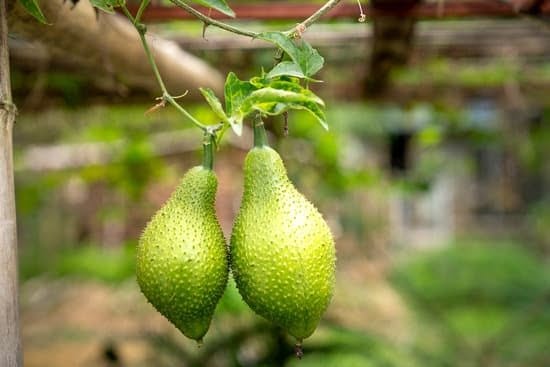Are you looking for fresh new ideas for your garden in New England? Whether you’re a seasoned gardener or just starting out, this article will provide you with plenty of inspiration and practical tips to create a beautiful outdoor space that thrives in the unique climate and soil of the region. From native plants to traditional elements, we’ll explore how to design, maintain, and showcase stunning gardens that capture the essence of New England.
New England gardens are known for their charm, diversity, and ability to withstand the ever-changing weather conditions. In this section, we will delve into the unique aspects of gardening in this region, from understanding the local climate and soil to incorporating traditional elements that reflect the rich history of New England. If you’re searching for new england gardens ideas, look no further – we’ve got you covered.
With a focus on sustainability and biodiversity, we will also discuss how to attract birds and wildlife to your garden while creating a four-season oasis that delights year-round. So whether you’re dreaming of a cottage garden bursting with blooms or seeking unique accents to elevate your outdoor space, join us as we explore the world of New England gardens.
Understanding the Climate and Soil in New England
New England is known for its distinct climate and soil, which have a significant impact on gardening in the region. The climate in New England is generally characterized by cold winters, mild summers, and a moderate amount of rainfall throughout the year. The soil in New England varies from region to region but is predominantly rocky with a mix of sand, silt, and clay.
When planning a garden in New England, it is important to take into account the climate and soil conditions. It is essential to select plants that are well-suited to the cooler temperatures and can withstand occasional frosts. Some popular native plants for New England gardens include Eastern Red Columbine, Pink Turtlehead, Blue Flag Iris, and Winterberry.
In addition to choosing the right plants, it is crucial to understand the soil composition in New England. The rocky nature of the soil can make it challenging for some plants to establish strong root systems. Adding organic matter such as compost or peat moss can help improve soil structure and fertility. Mulching also aids in retaining moisture and regulating soil temperature in New England gardens.
| Climate | Soil Composition |
|---|---|
| Cold winters, mild summers | Rocky with a mix of sand, silt, and clay |
| Moderate rainfall throughout the year | Varies from region to region |
Native Plants for New England Gardens
When it comes to creating a beautiful and thriving garden in New England, it is essential to choose the right plants that can withstand the region’s unique climate and soil conditions. Incorporating native plants into your garden not only adds to the natural beauty of the landscape but also promotes biodiversity and supports local wildlife.
Some excellent choices for native plants in New England gardens include the Eastern Redbud, a small tree with stunning pink flowers in the spring, and the Wild Columbine, a delicate perennial with red and yellow flowers that attract hummingbirds. For ground cover, consider planting Wild Geraniums or Foamflower, both of which thrive in woodland settings commonly found across New England.
In addition to being well-adapted to the local environment, native plants also require minimal maintenance once established, making them ideal for busy gardeners. By choosing native plants for your New England garden, you can create a sustainable and low-maintenance landscape that celebrates the natural beauty of the region while providing valuable resources for local wildlife.
Incorporating native plants into your garden not only benefits the ecosystem but also allows you to showcase the diversity of flora found in New England. Whether you are looking to create a wildflower meadow or a woodland oasis, there are plenty of native plant options available to suit your gardening style and preferences. With careful planning and selection, your New England garden can become a vibrant and ecologically valuable space that reflects the natural charm of the region.
Designing a New England Cottage Garden
When it comes to creating a cottage garden in New England, there are certain key elements to consider in order to achieve that charming and picturesque look. A cottage garden is known for its informal design, abundant plantings, and mix of flowering perennials, herbs, and shrubs. In New England, this type of garden can evoke a sense of nostalgia and tradition, while also providing a beautiful and serene outdoor space.
Choosing the Right Plants
One of the most important aspects of designing a cottage garden in New England is selecting the right plants. Native species such as black-eyed Susans, coneflowers, bee balm, and phlox are popular choices for their ability to thrive in the region’s climate and soil. Additionally, incorporating fragrant herbs like lavender, rosemary, and thyme can add to the sensory experience of the garden.
Creating Structure
A cottage garden should have a sense of organized chaos. It’s important to create structure within the space by using paths, arbors, and trellises. These elements not only add visual interest but also provide support for climbing plants such as roses or clematis. Consider adding a focal point such as a bench or a bird bath to further enhance the romantic feel of the garden.
Maintaining an Informal Aesthetic
In order to maintain the cottage garden’s relaxed and carefree aesthetic, it’s essential to embrace a certain level of imperfection. Allow plants to spill over pathways and borders, and embrace a mix-and-match approach when it comes to flower colors and textures. Regular deadheading and pruning will help keep the garden looking well-maintained while still preserving its wild charm.
By carefully selecting plants, incorporating structural elements, and maintaining an informal aesthetic, you can create a beautiful cottage garden that captures the essence of New England’s traditional charm. Whether you’re planting fragrant herbs or colorful perennials, there are endless possibilities for creating your very own New England cottage garden oasis.
Incorporating Traditional New England Elements
When designing a garden in New England, it’s important to incorporate traditional elements that are characteristic of the region. By incorporating these elements into your garden design, you can create a space that is not only visually appealing but also pays homage to the rich history and culture of New England.
Here are some traditional New England elements that you can consider incorporating into your garden:
- Stone walls: Stone walls are a common feature in New England landscapes and can add a rustic and timeless charm to your garden. Consider incorporating a stone wall as a boundary or as a decorative element within your garden.
- Colonial-era plants: To give your garden an authentic New England feel, consider planting native perennials such as coneflowers, black-eyed susans, and asters. These plants were commonly found in colonial-era gardens and can thrive in the climate and soil of New England.
- Wooden structures: Traditional wooden structures such as pergolas, arbors, and picket fences can add a touch of classic New England charm to your garden. These structures can provide support for climbing plants and create defined spaces within your garden.
In addition to these traditional elements, you may also want to consider incorporating other features such as a water feature or a vegetable garden to further enhance the beauty and functionality of your New England garden. By combining these traditional elements with modern design principles, you can create a unique and captivating outdoor space that reflects the classic charm of New England gardens.
Creating a Four-Season Garden in New England
New England gardens are known for their beautiful display of colors throughout the seasons. With the region’s distinct four-season climate, gardeners have the opportunity to create stunning landscapes that evolve and change year-round. Here are some ideas for designing a four-season garden in New England:
1. Select a variety of plants: When planning a four-season garden, it’s important to choose plants that provide interest and color during each season. Consider incorporating evergreen trees and shrubs for winter interest, early blooming bulbs for spring, colorful perennials for summer, and ornamental grasses for fall.
2. Add structural elements: Incorporating hardscaping elements such as pathways, arbors, and trellises can add visual interest to the garden during the winter months when many plants are dormant. These elements can also serve as focal points throughout the garden, providing structure and form year-round.
3. Embrace native plants: Native plants are well-adapted to New England‘s climate and soil conditions, making them ideal choices for a four-season garden. Look for native species that offer seasonal interest, such as flowering dogwood or Eastern red cedar, to ensure your garden remains vibrant throughout the year.
By carefully selecting a diverse range of plants, adding structural elements, and embracing native species, you can create a visually stunning four-season garden in New England that will delight you and your visitors year-round.
Maintaining and Caring for New England Gardens
Once you have created your beautiful New England garden, it is important to properly maintain and care for it to ensure its longevity and health. The climate in New England can be harsh at times, with cold winters and hot summers, so proper care is crucial.
One of the most important aspects of maintaining a New England garden is regular watering. Depending on the weather, you may need to water your plants more or less frequently. It is essential to pay attention to the moisture level of the soil and adjust your watering schedule accordingly. Additionally, applying mulch around plants can help retain moisture and regulate soil temperature, which is especially beneficial during the extreme weather conditions in New England.
Another essential aspect of caring for a New England garden is proper pruning and trimming. Regular maintenance of plants helps promote healthy growth and prevents overcrowding. It also allows for better air circulation and sunlight exposure, which are vital for plant health.
| Maintaining Tips | Caring Tips |
|---|---|
| Regular watering based on weather conditions | Pruning and trimming for healthy growth |
| Applying mulch to retain moisture | Maintaining soil quality |
Lastly, maintaining soil quality is essential for the overall health of your New England garden. Conducting regular soil tests can help determine if any amendments are needed to improve soil fertility and pH levels. Additionally, incorporating organic matter such as compost into the soil can provide essential nutrients for plant growth. By following these maintenance and care tips, you can ensure that your New England garden remains vibrant and thriving throughout the year.
Tips for Attracting Birds and Wildlife to Your New England Garden
Attracting birds and wildlife to your New England garden can create a beautiful and lively outdoor space. By incorporating features that provide food, water, and shelter, you can invite a variety of species to visit and even make their homes in your garden.
Planting Native Trees, Shrubs, and Flowers
One of the best ways to attract birds and wildlife to your New England garden is by planting native trees, shrubs, and flowers. Native plants provide natural sources of food and nectar for local bird species, butterflies, bees, and other pollinators. Consider adding flowering plants such as coneflowers, black-eyed susans, and bee balm to attract pollinators. Additionally, berry-producing shrubs like mountain ash and serviceberry can provide food for birds throughout the year.
Providing Water Sources
Water is essential for attracting wildlife to your garden. Including a bird bath or small pond can serve as a water source for birds to drink from and bathe in. To attract amphibians and other wildlife, consider adding a shallow water feature with rocks or logs for animals to climb on or hide under.
Creating Shelter and Nesting Spaces
Another way to attract birds and wildlife is by providing shelter and nesting spaces. Planting dense shrubs or evergreen trees can offer protection for birds from predators as well as harsh weather conditions. You can also install birdhouses or nesting boxes at varying heights to accommodate different species of birds.
By incorporating these tips into your New England garden design, you can create a welcoming environment for birds and wildlife while enjoying the beauty of nature right in your own backyard.
Unique Features and Accents for New England Gardens
When it comes to creating a unique and eye-catching garden in New England, there are plenty of features and accents that can help elevate the overall look and feel of your outdoor space. From charming stone walls and pathways to colorful birdhouses and whimsical sculptures, adding these special touches can truly make your garden stand out.
One idea for incorporating unique features into your New England garden is to include a quaint water feature such as a small pond or fountain. Not only does this add visual interest and a sense of tranquility to your outdoor space, but it also provides a habitat for local wildlife such as birds, frogs, and insects.
Additionally, consider adding a rustic wooden bench or swing where you can sit back and enjoy the beauty of your garden while taking in the sights and sounds of nature.
Another way to enhance the charm of your New England garden is by including traditional elements such as a classic white picket fence, vintage lanterns, or antique garden tools for decoration. These timeless accents not only pay homage to the region’s rich history but also add character and warmth to your outdoor oasis.
In addition to these features, don’t overlook the power of incorporating native plants and flowers into your New England garden design. Utilizing locally-sourced materials such as weathered driftwood, reclaimed barn wood, or fieldstone can also add an authentic touch that celebrates the natural beauty of the region. By integrating these unique elements into your garden, you can create a captivating space that reflects the charm and allure of New England.
Showcasing Stunning New England Garden Examples
In conclusion, New England gardens offer a unique combination of history, culture, and natural beauty that can be reflected in the design and maintenance of these outdoor spaces. By taking into consideration the specific climate and soil conditions of the region, as well as incorporating native plants and traditional elements, homeowners can create stunning landscapes that honor the rich heritage of New England.
Designing a New England cottage garden allows for a charming and picturesque display of colorful blooms and lush vegetation. With careful planning and attention to detail, homeowners can create an inviting atmosphere that evokes a sense of nostalgia while still embracing modern gardening techniques. Additionally, incorporating traditional elements such as stone walls, picket fences, and winding pathways adds to the overall appeal of these gardens.
For those looking to showcase stunning New England garden examples all year round, creating a four-season garden is key. By carefully selecting plant varieties that thrive in each season and adding features such as evergreen trees, hardscaping elements like pergolas or arbors, and bird feeders or baths for wildlife attraction, homeowners can enjoy a vibrant and lively garden throughout every season.
Lastly, by dedicating time to maintaining and caring for their gardens while also incorporating unique accents such as water features or sculpture art pieces, individuals can elevate their New England landscapes to showcase their true beauty.
Frequently Asked Questions
How Do I Plan a Garden in New England?
Planning a garden in New England requires consideration of the region’s climate and soil. It’s important to choose plants that are suitable for the area, such as asters, black-eyed Susans, and tulips. The layout should also account for the changing seasons and varying levels of sunlight.
What Vegetables Can You Grow in New England?
In New England, a variety of vegetables can be successfully grown, including tomatoes, cucumbers, lettuce, carrots, and peppers. Root vegetables like potatoes and onions also thrive in the region’s cool climate. When choosing which vegetables to grow, it’s important to consider factors such as frost dates and the length of the growing season.
How Do I Make My Garden Look Like an English Garden?
To make your garden look like an English garden, consider incorporating elements such as lush green lawns, colorful flower borders, and meandering pathways. Opt for traditional English garden plants like roses, lavender, delphiniums, and hollyhocks. Additionally, adding architectural features like arbors or trellises can enhance the overall aesthetic of your garden.

Welcome to my gardening blog! I am passionate about plants and enjoy sharing my knowledge and experiences with others. In this blog, I will write about everything related to gardening, from tips on how to get started to updates on my own garden projects.





